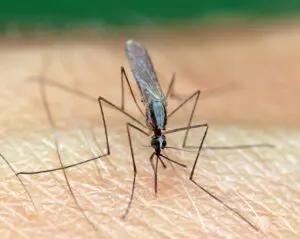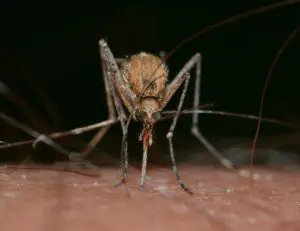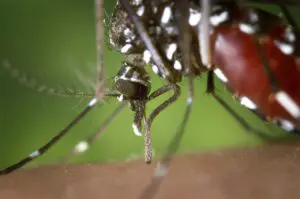
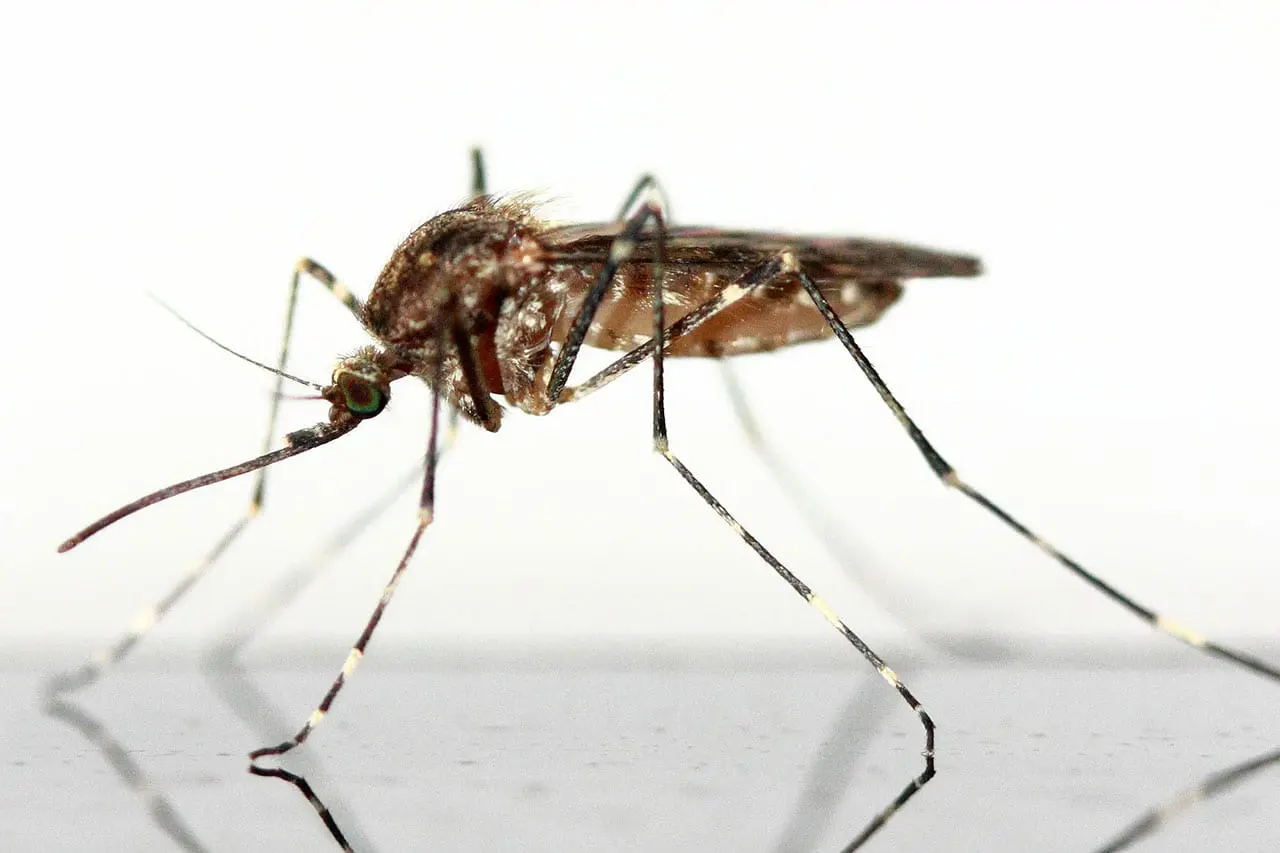
Mosquitoes are not just annoying insects that keep you up at night because of their incessant buzzing, they are also carriers of deadly diseases which makes it vital to understand when they are most active.
Understanding when mosquitoes are most active helps to implement effective mosquito control measures year round. And in this comprehensive guide, we take a closer look at the factors influencing mosquito activity, from geographical influences and weather conditions to behavioral aspects and residential mosquito control strategies.
By exploring these various facets, we aim to offer valuable insights into when mosquitoes are most active in Florida and how people can protect themselves and their homes year-round.
From examining the surprising role of wind in mosquito flight to unpacking the significance of blood feeding when it comes to life cycles, each section of our guide provides a clear perspective on mosquito behavior and control.
Whether you're dealing with frustrating mosquito challenges in Florida's water-adjacent habitats or aiming to control mosquitoes in your backyard, this guide is designed to equip you with the knowledge to combat these disease-carrying pests.
Navigating Geographic Influences on Mosquitoes
Understanding the geographical influences on mosquito activity is vital when it comes to effective pest control and disease management. As vectors for a variety of infectious diseases such as Zika virus, dengue fever and malaria, mosquitoes show varying levels of activity based on environmental factors that are related to geography. We take a closer look at these influences as they provide insight into when mosquitoes are most active - ultimately helping to mitigate their impact.
One primary geographical facet that influences the activity of mosquitoes is climate. Mosquitoes thrive in humid and warm environments as temperature plays a significant part in their life cycle and activity. Warmer climates usually support higher mosquito populations and levels of activity. WIth this in mind, regions with tropical and subtropical climates will usually experience more intense mosquito activity when compared to temperate areas.
Another factor that influences when mosquitoes are most active is precipitation - this is because precipitation patterns influence breeding. Mosquitoes require stagnant water for their breeding habits and areas with frequent rainfall or high humidity offer ample breeding grounds. Regions that experience rainfall that is characterized by standing water, such as ponds, swamps and marshes, also tend to attract larger populations with heightened activity levels.
In geographical context, human activities and urbanization also further influence mosquito activity. Urban areas that have high population densities coupled with inadequate sanitation infrastructure have the ability to create ideal breeding conditions for these buzzing pests. Factors including water storage practices, waste disposal methods, and land use patterns play roles in shaping mosquito habitats and activity levels within urban environments.
Geographic influences such as climate, precipitation and human activities contribute to understanding when mosquitoes are most active. By understanding these factors, individuals and pest control agencies are able to develop strategic mosquito interventions to manage populations and reduce the risk of mosquito-borne diseases.
The Southern Symphony: Mosquitoes Near Water
After taking a close look at the geographical factors that influence mosquito behavior such as rainfall, stagnant water and humidity - it is easy to see why these pests are active in the state of Florida. But, when are mosquitoes most active in Florida? Understanding mosquito activity in the southern states, particularly in water-adjacent habitats like Florida, involves considering a variety of factors unique to the region.
In Florida, mosquitoes are most active during the warmer months, usually from late spring through to early fall. The state's subtropical climate provides ideal conditions for mosquito activity and breeding, with high temperatures and humidity levels contributing to their increase. Florida's extensive network of water bodies, including swamps, marshes, and coastal areas, also creates vast breeding grounds for mosquitoes.
Water-adjacent habitats play a significant role in sustaining mosquito populations in Florida. These environments provide the stagnant water required for mosquito breeding, making them hotspots for mosquito activity. In particular, wetlands are rich ecosystems that support diverse mosquito species, each with its own activity patterns and preferences.
Human activities in Florida, such as landscaping practices, water storage, and recreational activities near water bodies, can also inadvertently contribute to mosquito breeding and activity. Poorly maintained swimming pools, clogged gutters, and neglected containers can become breeding grounds for mosquitoes, exacerbating the issue in residential areas.
Mosquito activity in Florida is closely tied to its subtropical climate and the abundance of water-adjacent habitats. Understanding the dynamics of mosquito activity in these environments is essential for effective mosquito control and disease prevention efforts in the region.
Weather and Mosquito Activity
Understanding how meteorological conditions affect mosquito behavior is vital for effective pest management and disease control strategies. A variety of weather factors, including wind, temperature, humidity, rainfall, and overall climate, play roles in shaping mosquito activity patterns.
Wind's Influence on Mosquito Flight
While often overlooked, wind actually plays a subtle yet important role in mosquito activity. Mosquitoes are relatively weak when it comes to flying and they rely on wind conditions to help navigate efficiently. Strong winds can disrupt their flight patterns and make it challenging for them to locate hosts or breeding sites. On the other hand, calmer winds or gentle breezes facilitate mosquito flight as these breezes allow them to disperse over larger areas in search of meals or breeding habitats.
Temperature Tactics: Impact on Mosquito Behavior
As stated previously, temperature has a profound influence on mosquito behavior, particularly when determining their flight patterns and activity levels. Mosquitoes are ectothermic organisms - this means that their body temperature depends on the outside environment. Warmer temperatures speed up their metabolic rate, leading to increased activity and shorter development times for eggs, larvae, and pupae. As temperatures rise, mosquito activity peaks, which poses a greater challenge for pest control and disease prevention efforts.
Cooler temperatures, conversely, have the power to slow down mosquito metabolism and reduce their activity levels. During colder seasons or times of the day when temperatures drop, mosquitoes may become less active as they seek shelter or enter diapause (a period of suspended development) in order to survive. Understanding these temperature variations is vital for predicting mosquito activity and implementing targeted mosquito control measures.
Humidity Influencing Mosquito Activity
Humidity levels play a role when it comes to the question of “when are mosquitoes most active?”
Mosquitoes are highly sensitive to changes in humidity because humidity affects their ability to regulate water balance. High humidity levels provide the perfect conditions for mosquito survival and reproduction, allowing them to thrive in humid environments where stagnant water is present.
Mosquitoes thrive in high humidity but low humidity levels pose challenges for their survival, especially during dry spells. Mosquitoes may seek out moisture-rich habitats or change their behavior to conserve water and minimize water loss.
Rainfall Resilience: Managing Mosquito Activity
Rainfall can have both positive and negative effects on mosquito activity, depending on the timing, intensity, and duration of rainfall. While precipitation replenishes mosquito breeding habitats by creating stagnant pools of water, excessive rainfall can drive away mosquito larvae and disrupt sites for breeding.
Managing mosquito activity during these times of rainfall requires proactive strategies, such as eliminating standing water sources and promoting community-based mosquito control efforts.
Understanding Mosquito Swarms
When are mosquitoes most active in Florida or in the southern states? Well, mosquito swarm behavior and breeding are fascinating aspects of their reproductive cycle. Mosquito swarms usually consist of males gathering in large numbers to perform intricate flight patterns to attract females for mating.
These mosquito swarms offer opportunities for males to locate females and engage in copulation. Understanding the mechanisms behind mosquito swarming behavior offers insight into population dynamics and reproductive strategies by these insects.
Behavioral Necessities for Mosquito Reproduction
Several behavioral factors are important for successful mosquito reproduction. Male mosquitoes rely on swarming behavior to increase their chances of encountering females for mating. Once a female is located, males engage in rituals involving wing beats and pheromone release to acquire mating opportunities. Females, however, show selective mating preferences, choosing partners based on various factors such as size, age, and genetic compatibility.
Adult Mosquito Feeding Habits
Exploring the feeding habits of adult mosquitoes helps us understand their nutritional needs and further understand their behavioral patterns.
Nectar Nutrition: Energizing Mosquito Activities
Nectar serves as the primary energy source for adult mosquitoes, fueling their flight and reproductive activities. While both male and female mosquitoes feed on nectar for energy, females require additional nutrients from blood meals to develop eggs. Nectar-feeding behavior is essential for sustaining mosquito populations and maintaining ecosystem balance, as mosquitoes play crucial roles as pollinators in various habitats.
The Role of Blood Feeding
Examining the significance of blood feeding in mosquito life cycles unveils the critical role it plays in female reproduction and disease transmission.
Variation in Blood Feeding Habits
Mosquito species show variability in their blood-feeding preferences, targeting a wide range of hosts including mammals, birds, reptiles, and amphibians. Factors influencing blood-feeding habits include host availability, environmental conditions, and genetic predispositions. Understanding these variations is vital for predicting disease transmission dynamics and implementing targeted vector control measures.
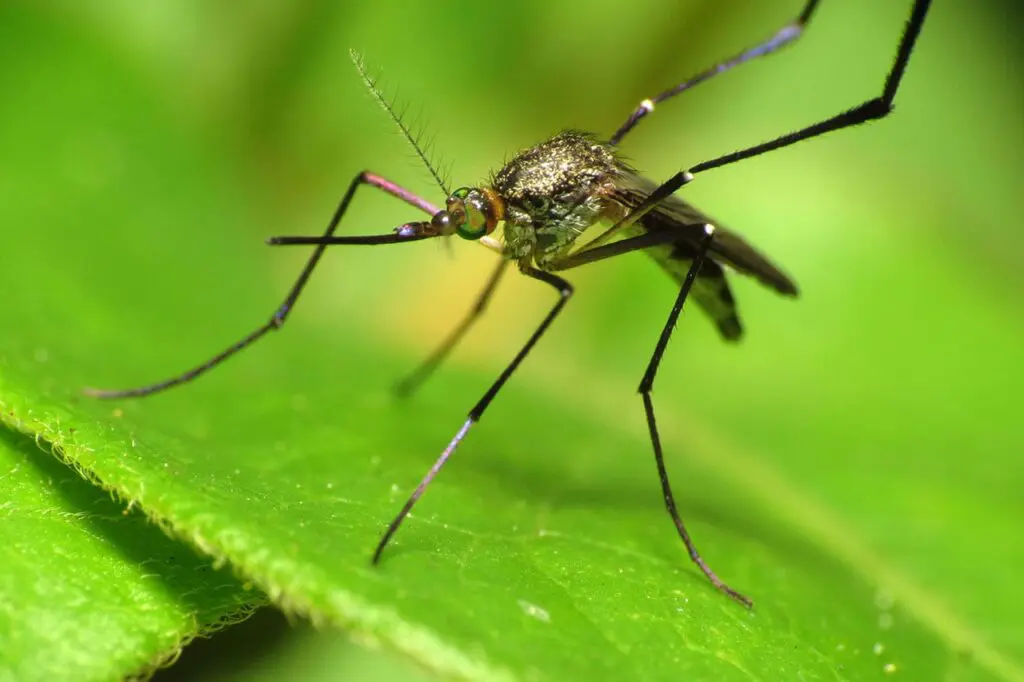
Protecting Homes Year-Round
Protecting homes from mosquitoes year-round is vital for ensuring the health and comfort of residents. Below, we take look at some tips for effective mosquito protection:
- Remove Standing Water: Get rid of any sources of standing water around your home, such as flower pots, birdbaths, and clogged gutters, as these serve as breeding grounds for mosquitoes.
- Install Screens: Keep windows and doors screened to prevent mosquitoes from entering your home while still allowing for ventilation.
- Maintain Your Yard: Trim vegetation, mow the lawn regularly, and remove debris to eliminate hiding places for mosquitoes.
- Consider Professional Pest Control: Hire a pest control service that specializes in mosquito control to implement comprehensive solutions tailored to your property.
Excels pest control solution offers a range of effective mosquito control products and services designed to protect homes year-round. Our expertise and advanced technologies ensure thorough mosquito management, providing peace of mind for homeowners.
Mastering Mosquito Control
Mastering mosquito control requires a comprehensive understanding of mosquito behavior and effective strategies for management. Key insights include:
- Understanding Breeding Sites: Identify and eliminate potential breeding sites around your property to prevent mosquito populations from flourishing.
- Implementing Integrated Pest Management (IPM): Adopt an IPM approach that combines multiple control methods, such as habitat modification, biological control, and environmentally friendly chemical interventions, for sustainable mosquito management.
- Monitoring and Surveillance: Regularly monitor mosquito populations and disease activity in your area to inform control efforts and assess the effectiveness of interventions.
By applying these insights and techniques, homeowners and pest control professionals can effectively master mosquito control, creating safer and more comfortable living environments for residents.
Excel Pest Services comprehensive mosquito protection plans are designed to keep your yard mosquito-free all season long. Contact us today to learn more and schedule your mosquito protection service.




